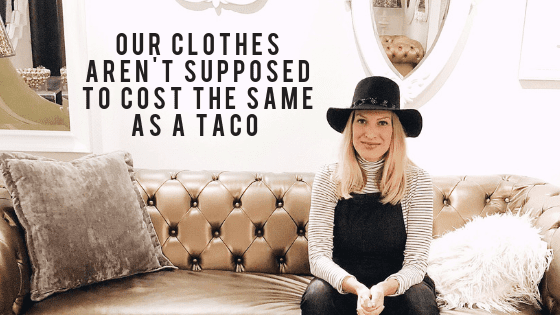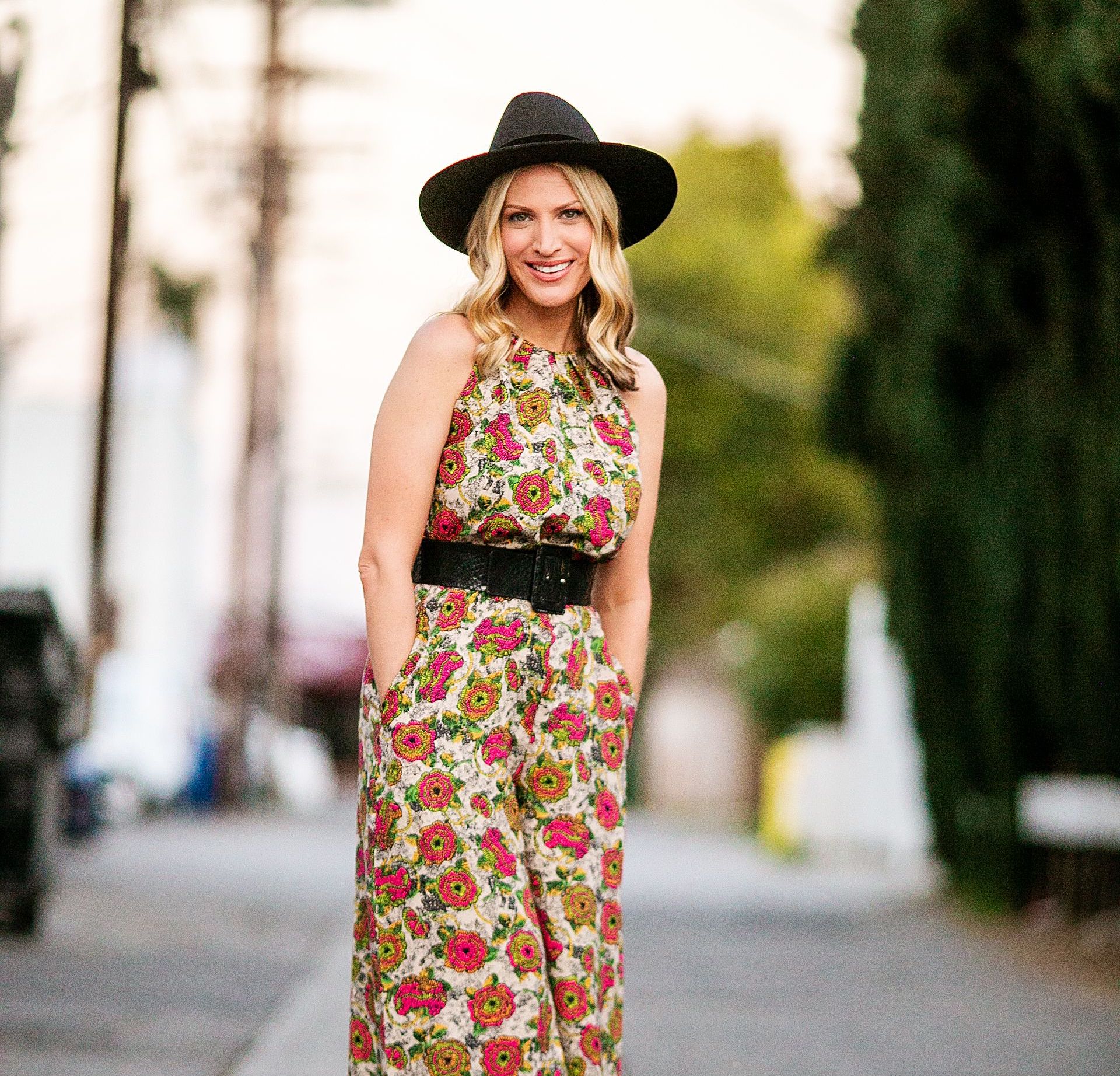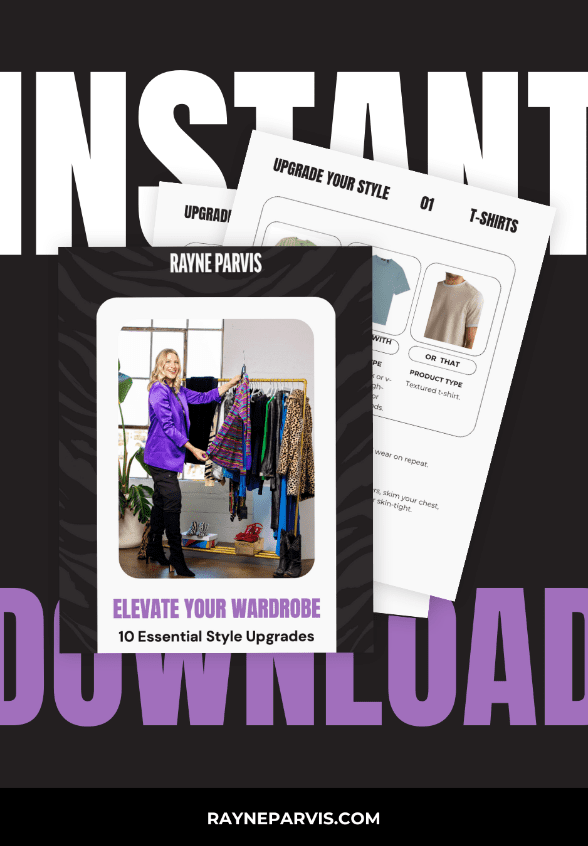
I recently read Overdressed and watched The True Cost, a documentary on Netflix about the detrimental effects of fast fashion(to us, the planet & it’s workers), how our society got into this deposable garment catastrophe and the psychological brainwashing consumerism that has played a key role in helping destroy quality fashion.
Before paying attention to fast fashion articles, I’d also always be on the hunt for a good deal and had mental trouble purchasing full price clothing. I was raised to always find the best deal! I understood, a $150 blouse would way outlast the $10 blouse but I didn’t quite get how advertising played a vital role in our decision making, how buying a cheap piece of clothing is actually hurting people in other countries who are working in unsafe working conditions, make very little money…like the kind of money you and I may drop and be too lazy to pick up… and contributing to tons of tons of material ending in the landfills polluting our environment.
With signs like any garment for $5.99, 3 shirts for $20 and 5 pairs of panties for $25 etc. in every mall, mini-mall and fast fashion(Old Navy, Gap, Forever 21) clothing commercial, I can now see why when we shop, we have extreme trouble in plopping down $395 for a pair of quality trousers that will last you for years.
Our subconscious brains just can’t get over the difference in price…unless we become educated. This reminds me of a few clients that I have had over the years. One, in particular, lived in a million dollar house, had decorated her home with designer furniture and had the best make-up brands and perfumes on her vanity. However, when I open the door to her closet I came across Ross, Dress for Less, clearance items, Zara business casual clothes with the seams coming apart, Fashion Q crop tops, dresses and pants with pilling and an entire closet estimated to be worth $1500-$2000 overall at the time of purchase..but had absolutely no present value. Cheap clothing doesn’t hold any resell value and is meant to be disposable. Everything in her closet didn’t represent the successful refined woman she was…and she had it filled with every trend in the book since 2000. We ended up donating and tossing 8-9 trash bags full of pieces. And even the pieces that we were donating…I knew they would probably end up in landfills too.
Where was the disconnect? Why do we spend $200,000 on education or $500 per month on a nice car that we don’t own but we have trouble paying over $20 for a pair of pants? I hope you are starting to see how our commercialism and need for more is playing a role in our investments.
Once you understand investing in a better wardrobe is as important as buying organic food you won’t feel guilty about spending more on your core pieces…or entire closet. I’m not saying I never buy a fun trendy scarf for $7.99 or a vintage t-shirt knock-off that will go with almost everything in my closet. I’m suggesting we look at our closets like our refrigerators. HAHAHA!
For me, I’m about 80/20. Also known as the 80-20 rule. 80% of my diet is organic and healthy and the rest is well…pizzas, french fries, and cookies. The same goes for my wardrobe. I also have bought a few items for my pregnancy that falls into the 20% aka “not the best” stuff. I’m not perfect and you don’t have to be either! For example, the overalls I am wearing in the photo are from the Gap. They are made really well and have lasted me wearing them 3-4 times a week for months. However, a shirt or sweater from there may not have lasted. And when I’m not pregnant, I can donate them and they are in still perfect wearable condition. My point, choose wisely.
Does that make sense? When we buy our clothes, try making baby steps to investing in your wardrobe future. If you can get your basics into the quality department….we can start to build you a high-quality wardrobe that will pollute, harm and wear and tear less. If you can’t afford to pay full price, shop on Posh Mark, Ebay and Thred Up to get your high-quality items at a price you can afford. Just like our food, our clothing wasn’t meant to cost $1.99.
For the record, I’m not a sustainable fashion or anti-fast fashion expert. However, I have changed my shopping habits and many of my clients. Here are a few resources to help shift your mind frame on how to shop for your clothes:
- Watch The True Cost on Netflix or Youtube.
- Read Overdressed.
- Read Fast Fashion Is A Disaster For Women And The Environment on Forbes.
Taking a few minutes to read the Forbes article or less than two hours to watch the movie, I promise your idea of you and fashion will be changed. This is a must if you are a shopaholic, have trouble investing for less and want to have a better understanding of how the fashion we choose can either work for us or against us and the world. And remember, any time we make a change….it takes time. My closet has evolved and I want yours to too.
Share this:
- Click to share on LinkedIn (Opens in new window) LinkedIn
- Click to print (Opens in new window) Print
- Click to share on Facebook (Opens in new window) Facebook
- Click to share on Reddit (Opens in new window) Reddit
- Click to email a link to a friend (Opens in new window) Email
- Click to share on X (Opens in new window) X
- More



